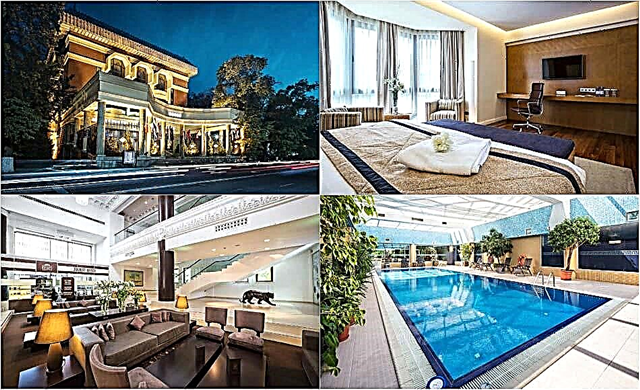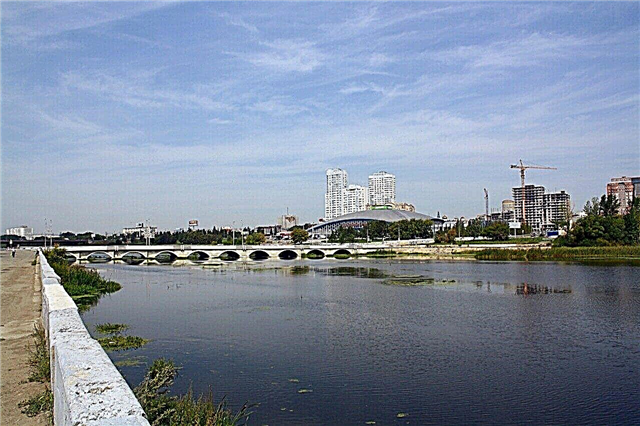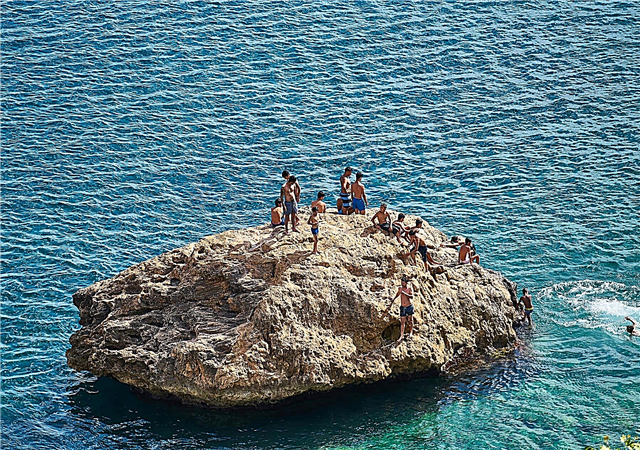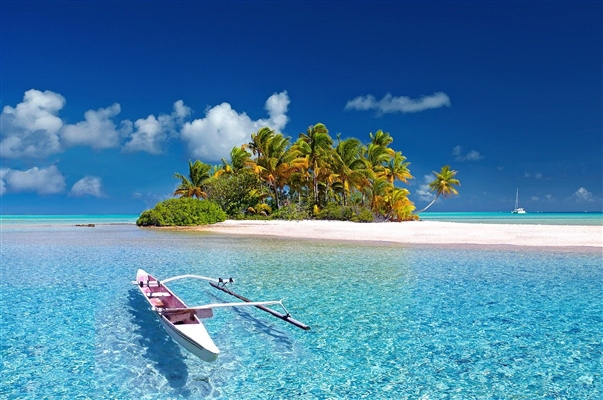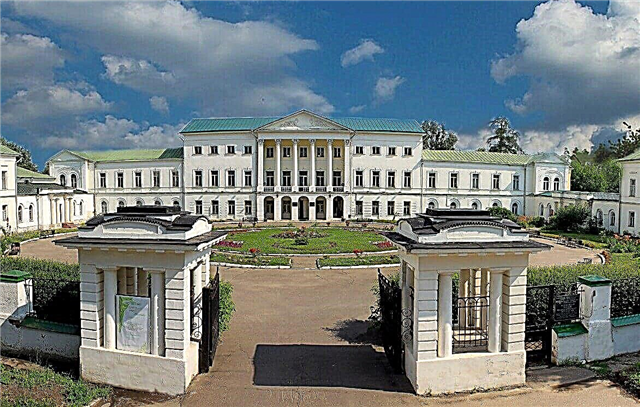The Moscow region is famous for its rich history and many attractions. A special place belongs to the noble estates, in the Moscow region there are more than a hundred of them. The Russian estate is not just an architectural complex of residential, utility and garden and park buildings. Here the traditions of the family and the whole clan were laid, which constituted the culture of the Russian nobility.
Many estates were the ancestral nests of famous writers and poets, scientists, and politicians. Most of them have retained their original appearance. Today they are monuments of history and architecture of national and regional significance. On the territory of some of them, museum exhibitions, excursions and thematic events are held, allowing you to get acquainted with the culture and life of the past centuries.
The most interesting estates in the Moscow region
Ancient noble estates and estates in the Moscow region, which are worth a visit!
Arkhangelskoe
The luxurious palace and park ensemble, perfectly preserved to this day, is one of the most visited in the Moscow region. Since the 17th century, the estate was owned by the Sheremetevs, Odoevskys, Golitsyns. The latter began to erect the central manor palace with columns; its construction took 40 years. But it was under the Yusupovs, from 1810 to 1917, that the estate became a single architectural complex and acquired a tsarist scale. Today a museum is organized here, excursions are conducted.

Serednikovo
In this quiet picturesque corner of the Moscow region, young Lermontov spent his summer holidays visiting his grandmother. Here he wrote about a hundred poems and the poem "The Demon". The manor complex includes the main two-storey house with four wings in the spirit of Russian classicism, outbuildings, a greenhouse, a church with a bell tower, a landscape park with a cascade of ponds and bridges. Today a literary museum has been created on the territory of Serednikovo.

Abramtsevo
One of the most famous museum-reserves of the Moscow region. Since 1843, the owner of the estate was the writer Sergei Aksakov. And after him the estate was acquired by Savva Mamontov, a famous industrialist and philanthropist. The best painters and sculptors of the 19th-20th centuries worked and rested here. Today, on the territory of the estate, you can visit museum expositions in the main house, a church with the tomb of the Mamontov family, an exhibition of Abramtsevo products from ceramics and wood carvings.

Ivanovskoe
The first mentions of this estate on the banks of the Pakhra date back to the beginning of the 17th century. It is known about several owners of the estate, among them - Fyodor Tolstoy, who was the great-uncle of Leo Tolstoy. During his reign, the main palace with two wings, a theater hall, a greenhouse, a garden pavilion, a horse yard and other outbuildings were built. After the revolution, there was a hostel in the estate. In the 80s, the building was renovated, and now a museum is open here.

Otrada-Semyonovskoe
The estate in Semenovskoye from the 18th century until the revolution belonged to the famous Orlov family. Its first owner was the youngest of four brothers - Vladimir. On his instructions, a pink brick palace, outbuildings, a church, a theater were built, an English garden, greenhouses, menageries, a park with gazebos and ponds were created. Later, a tomb temple appeared. After the revolution, the estate was plundered. Now it is dilapidated, access is open only to the operating temple.

Muranovo
The architectural and park ensemble of the mid-19th century includes a main house, a church, an outhouse, a children's house, several outbuildings and a garden. Since 1828, the estate was owned by General Engelhardt, and every summer his son-in-law, the poet Yevgeny Baratynsky, with his family, came here. After 1860, personal belongings and manuscripts of Fyodor Tyutchev were brought to the estate, since his descendants were relatives of the Baratynskys and Engelhardts. Currently, a museum of two poets is open in Muranovo.

Zakharovo
Since 1804, the estate belonged to the grandmother of Alexander Pushkin. As a child, together with his parents, he spent every summer here. Unfortunately, nothing has survived from the buildings of that time, only trees on the bank of the pond. The central manor house with the interior of the Pushkin era was recreated at the end of the last century for the anniversary of the poet. In the park area there are sculptures dedicated to little Sasha and his grandmother. A museum-reserve has been created in Zakharovo.

Bolshie Vyazyomy
Since the 16th century, the estate was owned by Boris Godunov. He built a wooden palace, a boyar house, a temple with a belfry - the only one of the buildings of that time that has survived to this day. From 1694 to 1917 the estate belonged to the Golitsyn family. A stone palace, outbuildings, a horse yard, a bridge over the river were built, and a park was equipped. Pushkin used to visit the estate, as his grandmother's estate was nearby. It was here that he met Natalia Goncharova. Now a museum functions in the estate.

Marfino
The estate in Mytishchi is famous for its luxurious palace and park ensemble, which was created by the best Russian architects. Its history began in the 16th century. But the main buildings - a two-story stone palace with wings and a main staircase, a figured stone bridge over a pond, a pier, a fountain, a church, a park with gazebos, a horse yard and kennels - were built in the 18th century under the Saltykovs. They have owned the estate for a century. Now there is a military sanatorium in Marfino.

Melikhovo
From 1892 to 1899, the estate 80 km from Moscow belonged to the famous Anton Chekhov. Here he lived, practiced medicine, built several schools, wrote more than 40 of his works. Today the estate houses a museum-reserve of the Russian writer. The interior of the house, the personal belongings of the Chekhov family have been preserved, and nearby there is an outbuilding, some outbuildings, an orchard, and a pond. A theater was created on the basis of the museum, concerts, festivals, exhibitions are held.

Slides
One of the few old estates with a perfectly preserved exterior and interior. It was first mentioned in the middle of the 16th century. Among the owners were the well-known names of Trubetskoy, Beketov, Durasov, Lopukhin. The central manor house with outbuildings, a park and outbuildings was built at the beginning of the 19th century. Lenin loved to come here, from 1923 until his death he lived here permanently. Today the estate houses a museum.

Shakhmatovo
In 1874 A. Beketov, the grandfather of Alexander Blok, became the owner of the estate near Tarakanovo. From childhood, the future poet spent all the summer months on the estate, until 1916. He even described the surroundings of Shakhmatovo in his works, and in 1910 a wooden manor house was rebuilt according to his own project. After the revolution, the estate was burned down by the peasants. Subsequently, it was restored, today there is a museum-reserve of the great poet.

Dubrovitsy
The magnificent Znamenskaya Church is the main attraction in Dubrovitsy on the banks of the Pakhra. It was built by Boris Golitsyn, the tutor of Peter I, in an atypical style. The top of the temple is crowned with a crown, there are many sculptures on the walls. Nowadays the church is active. The manor palace was built in the Baroque style in the first half of the 18th century and was subsequently rebuilt many times. Unfortunately, the luxury of its interior today can only be judged by photographs.

Pehra-Yakovlevskoe
The noble estate in Balashikha since the 16th century belonged to the noble family of the Golitsyn family. The estate reached its peak under Mikhail Golitsyn. A mansion with two wings, a temple, a theater was built, greenhouses and a park with figures of sphinxes and lions appeared. Today the park is abandoned, fountains and statues have been destroyed, and the estate needs major repairs. The agricultural university is located here. Since 1991, the temple has been transferred to the church, services are held in it.

Lyubimovka
The estate on the banks of the Klyazma was built in the 19th century. Since 1869, the family of Konstantin Stanislavsky lived here. In a small wooden theater built on the estate, he first appeared on the stage. Anton Chekhov and his wife spent the summer of 1902 here, working on the famous Cherry Orchard. After the revolution, the building housed a rest house, an orphanage, a hospital, and a hostel. Now the estate belongs to the Stanislavsky Foundation, a large-scale restoration is underway.

Yaropolets (Estate of the Zagryazhsky-Goncharovs)
In the 17th century, Yaropolets belonged to Hetman Doroshenko, and his grave is also located here. The architectural ensemble of stone began to be created under the Zagryazhskys in the 18th century - the main manor house, a brick fence, two towers at the entrance, a temple, a park with a pavilion, and outbuildings. Since the 20s of the XIX century, the estate belonged to the Goncharov family. Pushkin sometimes visited here - this helped the estate to survive in Soviet times. Today the manor houses a rest house.

Vorontsov-Dashkova estate
In the middle of the 19th century, Count Vorontsov-Dashkov was the owner of the estate in Bykovo. Under him, a two-story red-stone palace was built with columns-statues and a tower for an observatory. Nearby there was a botanical garden, a park with avenues of black roses and two ponds, the Hermitage building with a music salon and an aquarium room. The pearl of the estate is a church with a bell tower in a pseudo-Gothic style. Currently, the park is running, the building of the palace is gradually being destroyed.

Boblovo
The first information about Boblov of the Klin region dates back to the time of Ivan the Terrible, and from 1865 to 1907 the brilliant scientist Dmitry Mendeleev lived and worked here. He conducted agricultural experiments on the estate, studied the effectiveness of mineral fertilizers, and wrote scientific articles. After the revolution, the estate was badly damaged. Only one one-storey house has survived to this day, partially - an experimental field and a landscape park. The house is home to the D. Mendeleev Museum.

Fryanovo
The Fryanovo estate in the Shchelkovo district is one of the few built of wood and perfectly preserved to this day. At the end of the 18th century, the Lazarev family of traders and jewelers, immigrants from Persia, who received the nobility in Russia, were engaged in its arrangement. The manor house with a mezzanine is connected by passages to the side wings, where the greenhouses were located. A church and a lime park were laid nearby. Today a museum is open in the estate, music festivals and exhibitions are held.

Sukhanovo
The estate reached its greatest prosperity under the Volkonsky princes, who owned it from 1804 to 1917. The manor buildings were built by the best architects of the 19th century. This is a palace in the style of Russian classicism, and two wings, and a house of clergy in the form of a knight's castle, and two guest houses, as well as the house of the manager. The main attraction is the Volkonskys mausoleum, where the owners of the estate were buried. Today the estate is slightly abandoned, but accessible to the public.

Gorenki
The estate in Balashikha at the turn of the 18th-19th centuries was one of the richest and most beautiful in the Moscow region. Its owner, Count Razumovsky, was fond of plant growing; numerous exotic plants grew in his greenhouses. A park with gazebos and statues was created next to the estate. Unfortunately, the subsequent owners placed a weaving and foundry on the estate, which caused great damage to the palace and park. Today there is a sanatorium here, the building is gradually being destroyed.

Vvedenskoe
The manor complex on the outskirts of Zvenigorod was designed at the beginning of the 19th century by the famous architect Lvov by order of the owners - the Lopukhin family. All buildings were wooden, but at the beginning of the 20th century they were replaced with brick ones. The complex consists of a manor house with outbuildings, a small church with a bell tower, a lime park, a carriage shed and a horse yard. Currently, a sanatorium is located in Vvedensky, the entrance to the territory is limited for tourists.

Darovoe
A noble estate of the 16th century in Darovoye, not far from Zaraysk, together with a lime park, fields and gardens, in 1831 passed into the possession of the Fyodor Dostoevsky family. The future writer spent his childhood here. The heirs of the famous surname lived on the estate until 1929. Since the end of the last century, the estate has acquired museum status. An exhibition dedicated to the Dostoevsky family was housed in a wooden wing, and a monument to the great writer was opened nearby.

Krivyakino
The central house of the estate on the outskirts of Voskresensk was erected in the 18th century by the landowner Zamyatin. In addition to the manor house with baroque columns, the estate included two outbuildings and a park with a cascade of ponds. Subsequently, the estate has repeatedly passed from hand to hand. Its last owners emigrated to Europe during the revolution, the building housed a hostel, and then a children's sanatorium. Today the estate is visited by tourists, exhibitions and concerts are held there.

Lopasnya-Zachatyevskoe
The history of the estate in Chekhov is inextricably linked with the famous names of the Vasilchikovs, Goncharovs, Pushkins, Lansky. For many years, Pushkin's wife and his children and grandchildren have often been here. The main house in the Baroque style, a landscape park with picturesque ponds, and a small temple have survived from the manor complex of the 18th century. There is also a necropolis where the descendants of the Pushkins and Vasilchikovs rest. Today excursions, exhibitions, creative evenings are held in the estate museum.

Glinka
The architectural buildings of the estate were created at the beginning of the 18th century. It was owned by Count Jacob Bruce, an associate of Peter I, a well-educated man, well-read, engaged in many sciences. The rooms of the palace were converted by him into offices, where he conducted research, and the facades were decorated with demonic stone masks. The count had both an astronomical observatory and a collection of curious things that added to the Kunstkamera. Today the manor houses a sanatorium and a museum.

Grebnevo
One of the oldest estates in Russia in the Shchelkovo district was mentioned in the 16th century. At various times its owners were Trubetskoy, Bibikov, Golitsyns. Today, active work is underway to restore the estate. On the bank of the picturesque pond there are temporary houses for living, cafes, tents, a museum with a historical and biographical exposition and playgrounds. In the future, the creation of the largest architectural, historical, cultural, educational and entertainment cluster in Russia with an area of more than 300 hectares.

Ershovo
One of the most picturesque places in the vicinity of Zvenigorod. The main master's two-storey house in the Empire style of white brick was built in 1837, the owner was Count Vasily Olsufiev. At the same time, the church was founded. A park with linden alleys and a large pond with islands connected by walkways have survived to this day. During the war, the mansion and the temple were blown up by the Germans. Subsequently, they were restored, and since 1952 a rest house has been opened here.

Vorobyovo
In the 18th century, the estate in the Podolsk region belonged to the Tatishchev dynasty - the heirs of the famous historian and statesman Vasily Tatishchev. In those days, the main manor house was erected with columns in the classicism style, a small church, outbuildings, a beautiful park was equipped. All this has survived to this day. After the Tatishchevs, the estate changed several owners, among whom were the Vyazemsky princes. Today a rest house functions here.

Znamenskoye-Gubailovo
The first owners of the estate were the Volynsky family; they erected the Church of the Sign, which has survived to this day. Under the Dolgorukovs, in the middle of the 18th century, an architectural ensemble in the style of classicism was created - the main manor house with wings, the hermitage, a garden, parks with pavilions. Subsequently, the estate changed owners, the last was Sergei Polyakov, a publisher and philanthropist. Famous artists and writers visited him. Today, a cultural and exhibition complex has been created in one of the outbuildings.



